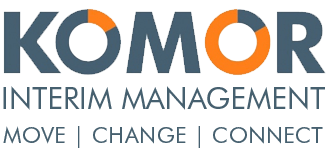SALES AS A SUCCESS FACTOR: TOP-LINE ORIENTATED RESTRUCTURING FOR A SUSTAINABLE TURNAROUND
In times of economic challenge, top-line restructuring is crucial. Sales has a central role to play. Not only is it responsible for overall sales, but it is also a key driver of a sustainable turnaround. In this article, we highlight the central importance of sales in the context of restructuring and present best practices and success factors for strengthening sales and successfully steering the company on the road to success. Find out how customer-centric realignment, strategic partnerships and targeted employee empowerment can turn sales into a game changer.
SALES EXCELLENCE AS A DRIVER FOR SUSTAINABLE TURNAROUNDS: BEST PRACTICES AND SUCCESS FACTORS
When it comes to restructuring, bold and early action is crucial – after all, the goal is to restore the company’s performance. Restructuring experts often focus first and foremost on cost-cutting measures in every conceivable area. This is understandable: the priority is to get the patient out of the operating theatre and into rehabilitation – not pathology. However, cost-cutting and rationalisation alone are not the best way forward, as they jeopardise the long-term viability of the business. Only a healthy balance between cost reduction and revenue growth will increase the chances of success.
THE TOP-LINE IN FOCUS
In restructuring, focusing on revenue growth means improving efficiency where it is needed – and increasing revenue where it is possible. Leaders should focus on revenue generation and align all the company’s activities around it. They should develop both strategic and operational measures to optimise sales performance, acquire new customers and strengthen the existing customer portfolio. Cost efficiency is important, but long-term stability and growth are difficult to achieve without a functioning sales organisation. Those who succeed in balancing cost reduction and revenue growth will put the wind back in their sails – and set the company on the road to success.
The aim of a top-line oriented restructuring is to focus sales on increasing turnover and customer orientation and to adapt sales processes to customer needs.
BUT BEWARE OF MISCONCEPTIONS
Top-line orientation is not simply about maintaining sales. On the contrary, it is about strengthening and strategically focusing on profitable sales growth and customer focus. A key component of top-line restructuring is to analyse the cost structure of each individual business area: purchasing, logistics, administration, production, marketing – and sales. The questions are Which processes and procedures can be made more cost-effective? Which ones can remain unchanged? And how can we increase sales without incurring additional costs?
KEY ROLE IN SALES
Sales plays a key role in the restructuring phase with three main tasks:
- reorganisation
The aim is to focus sales on increasing sales and customer focus, and to align sales processes with customer needs.
- communication
As the direct voice to the customer, sales are also responsible for customer communication and can communicate a positive change story.
- team development
Leaders should develop salespeople during the transformation, enabling them to acquire the necessary skills and drive the turnaround.
REALIGNMENT OF THE SALES ORGANISATION
A customer-focused realignment requires a thorough analysis of the sales organisation: What is the market like? What has changed in the last few years? Who are our competitors? Are there competitors from outside the industry? How have customer needs changed? What are their current challenges? And how does our current offering address those challenges? Do we have strong partners? Or should we move quickly to build a strategic ecosystem? And: How do we empower our sales force for the transformation?
Trends and competition
A thorough market analysis helps everyone involved to better understand the current market situation. Leaders should analyse relevant market trends, growth potential and opportunities. Only those who know the market well can make informed decisions and align their sales strategy accordingly. Salespeople should focus their resources and efforts on lucrative market segments, promising customers and profitable products – and get rid of underperforming products. It is also important to recognise changes in the market environment. Many new technologies, trends and business models have emerged in recent years. And as the saying goes: “If you don’t move with the times, you move with the times”. The question sales leaders need to ask themselves is Are we using modern technology to acquire, retain and serve customers? Or have we missed the trends?
Customers and offer
It is even more important to look at the customer side: customer needs change over time. Together with marketing and, if available, R&D, sales should analyse what new needs, preferences or challenges customers are facing. Only through a deep understanding of these changes can the company develop innovative solutions and continuously add value to the customer. They should also consider whether the current product and service offering already meets the customer’s challenges – or whether adjustments need to be made to the sales structure and value chain.
Partners and ecosystems
According to McKinsey, a third of global GDP could be generated in ecosystems by 2030. Together with strategic partners, competitors or players from outside the industry, companies can strengthen their competitive position and open new markets. The aim is to create synergies and benefit from the expertise of partners. Sales have an important role to play here: by working with partners, they can not only open new markets, but also develop joint offerings and provide added value to customers.
SALES FORENSICS AND SALES HYGIENE
Sales Forensics® and Sales Hygiene® are critical factors in the successful reorganisation of sales during restructuring. Sales Forensics® aims to identify and eliminate sales weaknesses. This can involve a detailed analysis of sales processes, customer interaction and sales performance. Sales Hygiene®, on the other hand, focuses on creating a customer-centric culture throughout the organisation and developing an efficient sales structure. It ensures that sales are focused on customer needs and enables a seamless customer journey.
USING EXTERNAL SUPPORT
During restructuring, it can be beneficial to bring in external support in the form of interim sales managers. Bringing in fresh ideas and external expertise, they can strengthen the sales team during the turnaround and develop innovative sales strategies. Interim managers can act as an additional resource and open new perspectives for the sales team.
CONCLUSION
Restructuring around the top line strengthens sales and increases the chances of success. By strategically focusing sales on revenue growth and customer focus, companies can strengthen their competitiveness, enter new markets and increase market share. Sustained sales growth leads to improved profitability and a positive corporate image that strengthens the trust of investors, customers and employees. Sales becomes a game changer and a key contributor to business growth despite restructuring.
Click here for the detailed article from the trade journal “SANIEREN + RESTRUKTURIEREN 08/2023”
I SUPPORT YOU ON THE WAY TO YOUR SUCCESS
I am a strategist, an innovator, an unconventional thinker, a mover and shaker and therefore I do the right things sooner and better.
And with pleasure also for you.
Together we can discover new market opportunities, steer product branding into the right direction, understand your customers better – and stand out from the competition with tailor-made products for your target group. All this leads to more customer satisfaction, greater customer lifetime value and more sales potential.
Can you afford not to go for it?








